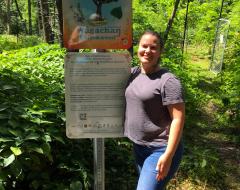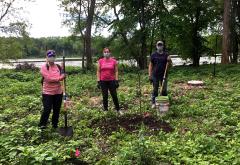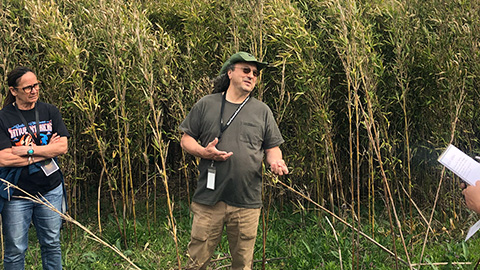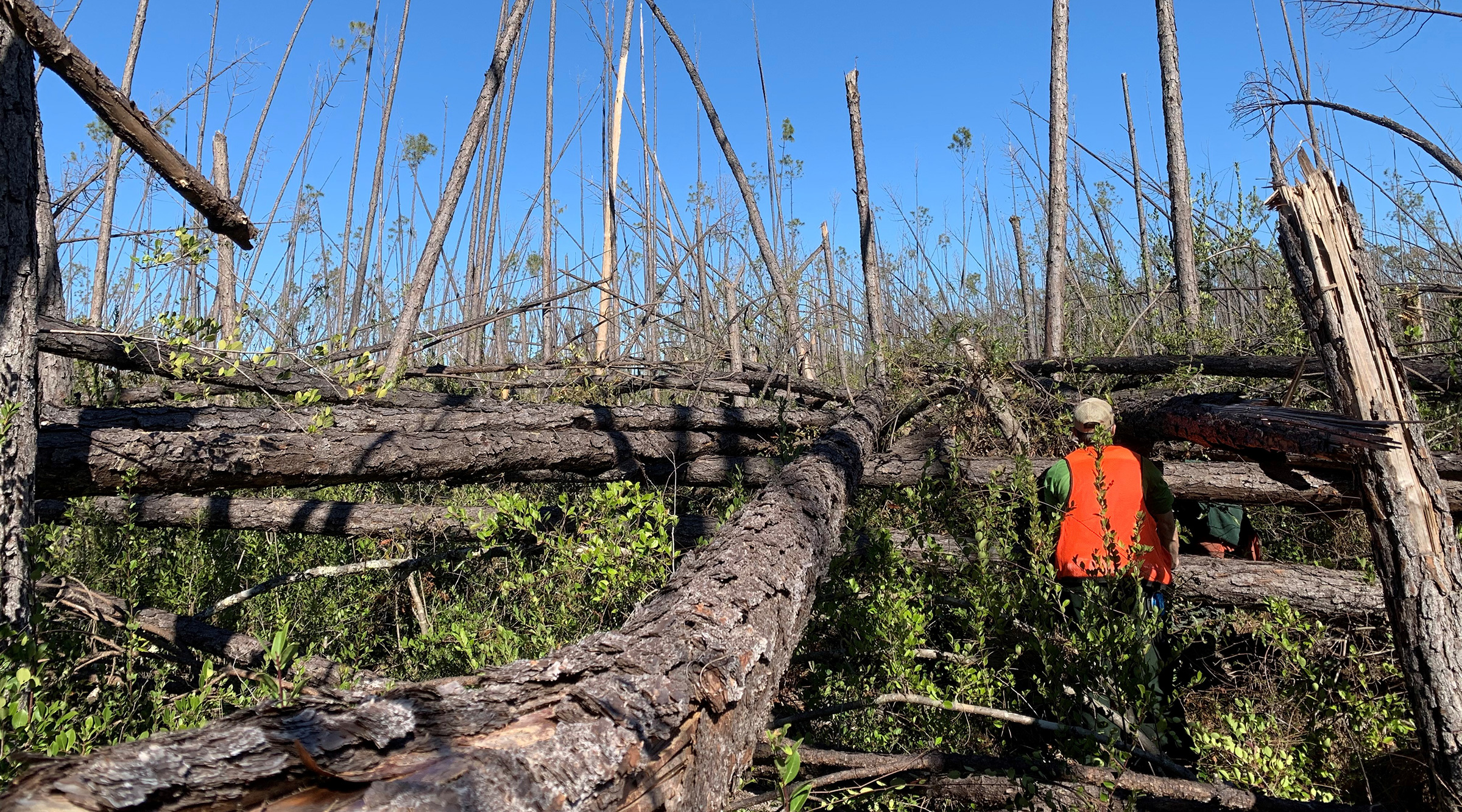Traveling trees seem like whimsy from the science fiction or fantasy genres – like J.R.R. Tolkien’s Ents or Groot from Marvel’s Guardians of the Galaxy. But tree species really do migrate in their own way, although it may take decades or centuries.
“Natural migration is very slow for most tree species,” said Leslie Brandt, a USDA Forest Service climate adaptation specialist. “They just don't have a very far seed dispersal distance, and they just cannot keep up with the rapid pace of climate change.”
The continuing and projected changes in climate exceed the natural migration and adaptation abilities of many tree species. This can translate into whole-forest and whole-landscape impacts from climate-induced die-offs.
If North American native trees do not fill the space, it causes even greater problems, as invasive tree species can rapidly take over. Or the ecosystem could rapidly change, like from hardwood to pine forest or from pine forest to prairie. These dramatic changes can cause harmful impacts on wildlife and humans who rely on these landscapes for resources to survive and thrive.
That’s where assisted migration comes in. Assisted migration is the human-assisted movement of populations or species in response to climate change and could be a proactive, pragmatic tool for building climate resilience in our landscapes.
Assisted migration 101
“Historically, people have been moving species around the globe for centuries, if not millennia. This is not new to forestry,” said Brandt. “What is new is the intentional use of climate data to help inform those decisions.”
There are three types of assisted migration: assisted population expansion, assisted range expansion, and assisted species migration.
Assisted population migration involves tree movement to new locations within their established historical range, typically as a seed or seedling. For assisted population migration, researchers collect seeds from a slightly lower elevation or latitude from trees of the same species likely to have slightly different genetic material that makes them adapted to warmer conditions.
Assisted range expansion is tree movement from their current range to suitable areas just beyond their current range.
Forest Service scientists are also researching assisted tree movement beyond range expansion to higher elevations and latitudes they are unlikely to reach without human intervention anytime soon. This movement of trees beyond their historic species range and typical range expansion is called assisted species migration.
“Assisted species migration can be a little more controversial, but many scientists argue is necessary given the rate of changes that we're seeing on the landscape, especially due to exotic insects and diseases. For rare or threatened species, assisted migration may be the only way to save a species,” said Brandt.
Assisted migration in action
When tree species decline in an area, it is sometimes prudent to incorporate additional species to fill that space. In these cases, foresters look for North American species that would still fit into that ecosystem, but that might not have been native to that particular location in the past.
For example, a forested area in Saint Paul, Minnesota, suffered extensive canopy loss due to the emerald ash borer. The emerald ash borer is a non-native invasive insect species that is wiping out North American ash trees.
“When these ash trees die, we're not seeing natural regeneration of other tree species,” said Brandt. “Invasive grasses and herbaceous species out-compete the native trees.”
To reestablish the tree canopy, Brandt’s team planted 19 different tree species. Some of these species, like silver maple, are native to the general area. Other species planted there – like sycamore and tulip poplar – are from warmer environments in southern Minnesota, Missouri and Illinois. These are examples of all three types of assisted migration.
“We're hoping to establish a tree canopy that can both be resilient against emerald ash borer because we're not planting ash, but also including other species that are native to the Mississippi River basin,” said Brandt.
The goal is to build up the forest ecosystem so it can sustain itself through projected climate change over time.
“In the Forest Service, we talk about forestry-assisted migration,” said Brandt. “Our work is about maintaining ecosystem function over the long run to provide services people rely on - like wood products, clean water, wildlife habitat, recreation opportunities - without fundamentally changing the character of that system.”
Making an assisted migration plan

The Forest Service released its reforestation strategy in July 2022, with the vision to "Grow and nurture resilient forests for tomorrow.” The strategy describes the need to reforest appropriately in the face of climate change to ensure the development of healthy, resilient future forests. Assisted migration is one reforestation tool to help ensure the right seedling is planted in the right place, at the right time, with the right species and at appropriate scales.
The agency’s Office of Sustainability and Climate has recently convened the Forestry Assisted Migration Technical Assistance Team to develop tools and resources needed to help managers decide if, when, where and how to implement assisted migration of tree species on Forest Service-managed lands.
With support from the Forest Service and its Office of Sustainability and Climate, the Superior National Forest in northern Minnesota is developing an assisted migration plan for its landscapes in collaboration with over 100 representatives from tribes, state and local governments, and partner organizations. Once complete, this plan will serve as a pilot for the national Forestry Assisted Migration Technical Assistance Team to test methods and processes to locally develop assisted migration plans on other forests across the country.
The Forest Service also participates in the Adaptive Silviculture for Climate Change Network, a collaboration of scientists, land managers, and key partners studying how to integrate climate change planning and adaptation into forest planning and management.
The goal is to understand where and how assisted migration can help maintain healthy, thriving landscapes across the country.
“We’re finding that some tree populations can’t keep up with shifting climate patterns on their own,” said Brandt., “With assisted migration, we're just kind of helping the trees along.”








